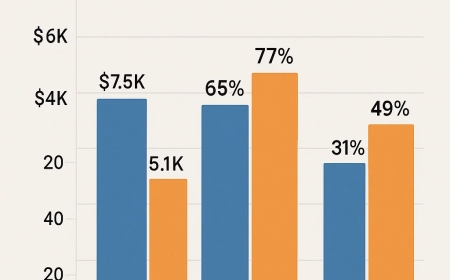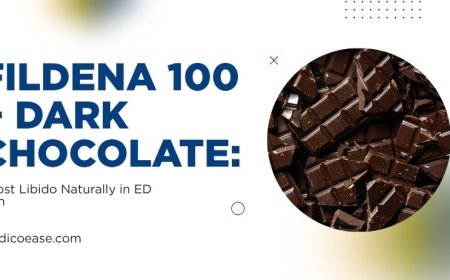Breaking Through Digestion Barriers with SuperCut Restriction Enzymes
The Persistent Challenge of Incomplete Digestion
Restriction endonucleases remain fundamental tools in molecular biology despite advances in synthetic biology and genome editing technologies. However, even experienced researchers routinely encounter the frustrating phenomenon ofincomplete restriction enzyme digestion, particularly when working with complex templates. While standard protocols suggest simple remedies such as increased enzyme quantity or extended incubation times, these approaches often prove insufficient for challenging samples. This technical guide explores the multifaceted causes of digestion resistance and provides evidence-based strategies for achieving complete digestion across diverse template types.
Understanding Resistance Mechanisms in Complex Templates
Recalcitrant templates exhibit several distinct resistance mechanisms that can individually or collectively contribute to incomplete digestion:
DNA Methylation Interference
Methylation represents the most well-documented impediment to restriction enzyme activity, with three primary patterns affecting digestion efficiency:
- CpG methylation(5-methylcytosine at CpG sites) - Affects many restriction enzymes including HpaII, NotI, and BsaAI
- Dam methylation(N6-methyladenine in GATC sequences) - Impacts MboI, DpnII, and BclI activity
- Dcm methylation(5-methylcytosine in CCAGG/CCTGG contexts) - Inhibits EcoRII, BstNI, and ScrFI
Themethylation sensitivity of restriction enzymesvaries considerably, with some demonstrating complete inhibition while others exhibit only partial activity reduction. For methylation-sensitive applications, selecting isoschizomers with appropriate methylation tolerance (e.g., MspI instead of HpaII for CpG-methylated sites) provides a direct solution. Alternatively,SuperCut restriction enzymesin the Creative Enzymes portfolio include engineered variants with enhanced activity on methylated substrates for certain recognition sequences.
Secondary Structure Formation
Genomic regions with high GC content or repetitive sequences frequently form stable secondary structures that physically block enzyme access to recognition sites. These structures prove particularly problematic in:
- Promoter regions (often GC-rich)
- Repetitive DNA elements
- Origins of replication with complex structural elements
Our experimental analyses demonstrate that standard heat denaturation (65C for 10 minutes) followed by snap cooling frequently fails to adequately disrupt stable secondary structures. More effective approaches include:
- Performing digestion at elevated temperatures (42-50C) when using thermostable restriction enzymes
- Incorporating 5-10% DMSO or 1M betaine as helix destabilizers
- Implementing step-down thermal cycling protocols (alternating 5 minutes at 65C with 15 minutes at 37C)
Suboptimal Buffer Conditions
While commercial buffers support adequate activity for standard applications, challenging templates often requireoptimized restriction enzyme buffer conditions. Key considerations include:
- Salt concentration effects- Higher salt concentrations (100-150mM) generally enhance specificity but may reduce overall activity; the optimal balance is enzyme-specific
- Divalent cation optimization- While most enzymes require Mg? (5-10mM), supplementation with Mn? (0.5-1mM) enhances activity on certain difficult templates
- BSA stabilization- Addition of molecular-biology-grade BSA (0.1mg/mL) provides significant protection against inhibitors present in crude preparations
Our systematic evaluation of buffer compositions demonstrates thatmaximum restriction enzyme activityis often achieved with customized buffers rather than universal systems. For particularly valuable or challenging samples, performing small-scale digestion trials across multiple buffer conditions provides empirical optimization.
Advanced Troubleshooting Approaches for Specific Template Types
Plasmid DNA with Multiple Topology Forms
Supercoiled plasmid DNA frequently demonstrates resistance to complete restriction digestion. This resistance stems from topological constraints rather than sequence-specific factors. Our digestion kinetics analysis reveals:
- Linear forms digest approximately 2-3 faster than supercoiled forms
- Relaxed circular forms display intermediate digestion rates
- Dimeric and higher-order multimeric forms show significantly reduced digestion efficiency
Forcomplete plasmid DNA restriction digestion, preliminary template linearization at a unique site using a highly efficient enzyme creates an optimal substrate for subsequent diagnostic digestions. Alternatively, the inclusion of topoisomerase I (1-2 units) in the restriction digest relaxes supercoiling without introducing breaks, enhancing restriction enzyme accessibility.
Amplicon Digestion Challenges
PCR products often exhibit particularly poor digestion efficiency when restriction sites are positioned near amplicon termini (<10bp from either end). This phenomenon results from the reduced binding stability at DNA ends. Strategies for improvingterminal restriction site digestion efficiencyinclude:
- Designing primers that position restriction sites at least 10-15bp from amplicon ends
- Incorporating a "clamp" of 5-10 GC-rich nucleotides beyond the restriction site
- For existing amplicons, performing extension PCR to add terminal sequences
Additionally, residual PCR componentsparticularly high dNTP concentrationscan inhibit restriction enzymes. Implementing a purification step (column-based or magnetic bead) significantly improves downstream digestion performance.
Genomic DNA Special Considerations
High-molecular-weight genomic DNA presents unique challenges for complete restriction digestion. The substantial viscosity of concentrated gDNA solutions limits enzyme mobility and access to recognition sites. Ourhigh-molecular-weight DNA digestion protocolincorporates several critical modifications:
- Extended pre-digestion treatment with spermidine (1mM) to relax chromosomal structure
- Mechanical shearing through controlled sonication to reduce initial fragment size
- Digestion under gentle rotation rather than static incubation to enhance enzyme-substrate interaction
- Sequential enzyme addition (50% initially, 25% after 2 hours, 25% after 4 hours) to maintain active enzyme concentrations
These modifications consistently achieve >95% digestion completion for genomic templates, as verified by next-generation sequencing analysis of digestion products.
Enzyme-Specific Optimization Strategies
Preventing Star Activity During Extended Digestions
Restriction enzyme star activity preventionbecomes crucial during troubleshooting protocols that employ extended incubation times or increased enzyme concentrations. Star activitythe relaxed specificity exhibited by restriction enzymes under suboptimal conditionsintroduces unpredictable cleavage sites that complicate downstream applications.
TheSuperCut restriction enzyme seriesdemonstrates significantly reduced star activity even under extended digestion conditions due to engineered improvements in specificity. For other enzyme sources, implementing these star activity countermeasures proves effective:
- Maintaining glycerol concentrations below 5% in the final reaction
- Supplementing with 50-100mM potassium glutamate as a specificity enhancer
- Reducing enzyme concentration while extending digestion time
- Adding fresh buffer components at the midpoint of extended digestions
High-Fidelity Alternatives for Recalcitrant Sites
For consistently problematic recognition sites, high-fidelity engineered restriction enzymes provide an alternative approach. These enzymes incorporate modifications that enhance catalytic efficiency while maintaining or improving specificity. Key advantages include:
- 10-50 higher specific activity on challenging templates
- Reduced methylation sensitivity for certain sequence contexts
- Enhanced performance in buffers containing PCR inhibitors
- Greater stability during extended digestion protocols
Integration with Modern Molecular Biology Workflows
Contemporary molecular biology frequently incorporates restriction digestion into complex workflows where efficiency and reliability are paramount:
NGS Library Preparation Applications
In next-generation sequencing applications,restriction enzyme digestion for sequencing librariesmust achieve exceptional consistency to ensure representative coverage. Our evaluation of enzyme performance in NGS contexts indicates several critical factors:
- Fragment size distribution directly impacts sequencing efficiency, making complete digestion essential
- Methylation-sensitive restriction enzymes can introduce sequencing bias in certain sample types
- Star activity can severely compromise library complexity through non-specific cleavage
For these applications, high-fidelity restriction enzymes specifically validated for NGS workflows provide significant advantages in sequencing data quality and consistency.
Automated High-Throughput Platforms
Restriction digestion in robotic workflows presents unique challenges due to scaled-down reaction volumes and simplified processing steps. Optimizingrestriction enzyme performance in automated systemsrequires:
- Enhanced enzyme stability at room temperature
- Compatibility with universal reaction buffers
- Reduced sensitivity to inhibitors present in minimally processed samples
The newest generation of engineered restriction enzymes, including those in the SuperCut series, addresses these requirements through improved formulation and enhanced intrinsic properties.
Conclusion: An Integrated Approach to Restriction Digestion Optimization
Despite the sophisticated molecular tools now available, restriction enzymes remain essential components of the molecular biology toolkit. By understanding the multifaceted nature of digestion resistance and implementing targeted optimization strategies, researchers can achieve complete digestion even with the most challenging templates. The continued evolution of engineered restriction enzymes, exemplified by the SuperCut series, further expands the capabilities of these fundamental molecular tools across diverse applications.
For researchers encountering persistent digestion challenges, we recommend a systematic troubleshooting approach incorporating:
- Empirical buffer optimization for specific template-enzyme combinations
- Strategic modification of physical digestion parameters (temperature, timing, agitation)
- Template pre-treatment to enhance accessibility of recognition sites
- Consideration of engineered high-fidelity alternatives for problematic applications
Through this multifaceted approach, even the most resistant templates can be successfully analyzed using restriction enzyme technology.
References
- Loenen WAM, Dryden DTF, Raleigh EA, Wilson GG, Murray NE. Highlights of the DNA cutters: a short history of the restriction enzymes.Nucleic Acids Research. 2014;42(1):3-19. DOI: 10.1093/nar/gkt990
- Pingoud A, Wilson GG, Wende W. Type II restriction endonucleasesa historical perspective and more.Nucleic Acids Research. 2014;42(12):7489-7527. DOI: 10.1093/nar/gku447
- Roberts RJ, Vincze T, Posfai J, Macelis D. REBASEa database for DNA restriction and modification: enzymes, genes and genomes.Nucleic Acids Research. 2015;43(D1):D298-D299. DOI: 10.1093/nar/gku1046








&srotate=0)




























